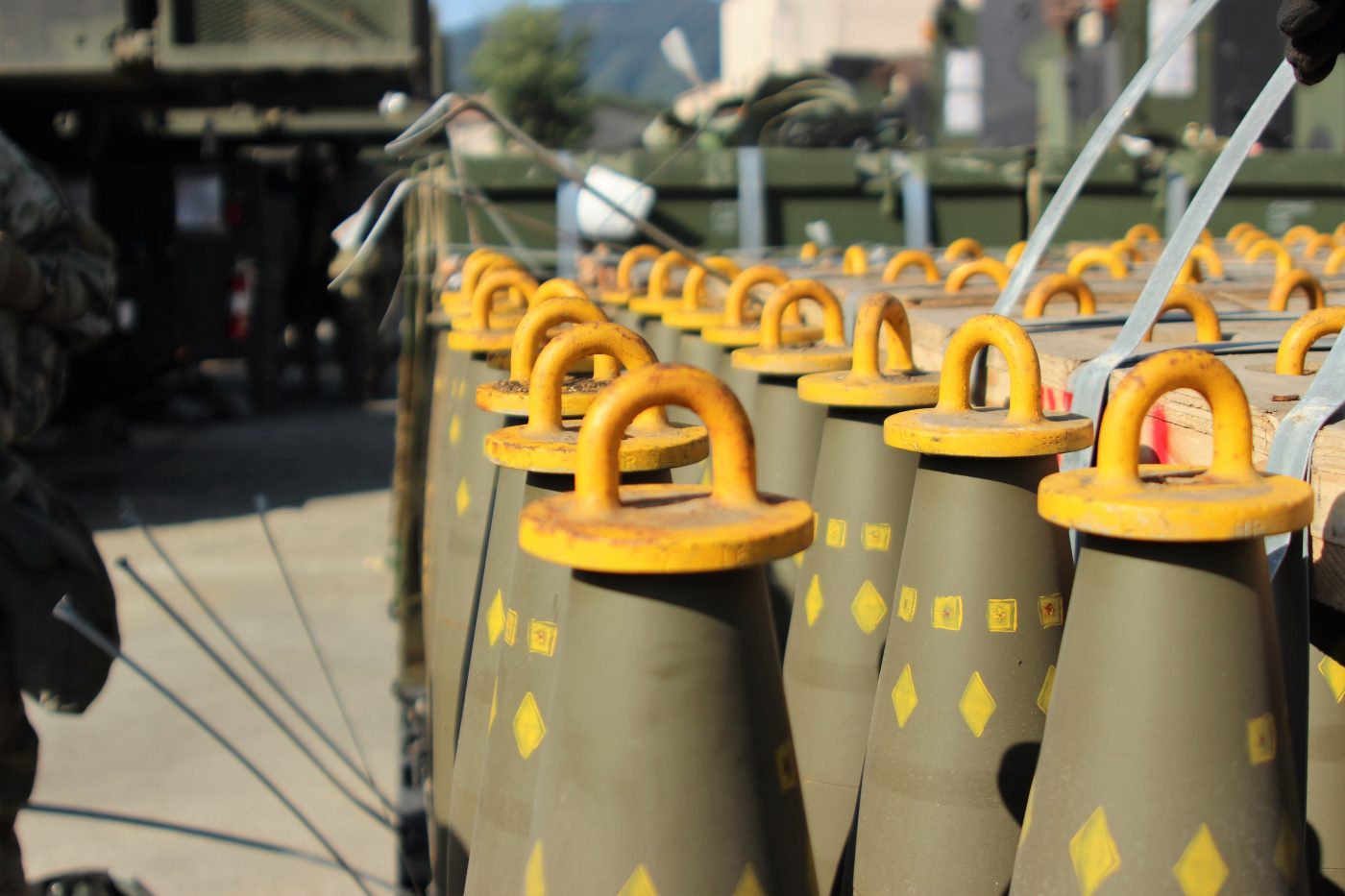A potential Russian invasion of the Baltic countries is a growing concern. The fear that Latvia, Lithuania, and Estonia would fall in a matter of days is a serious threat to regional stability and to alliance integrity.
Every military, diplomatic, and economic effort must be exhausted to deter a potential invasion of any NATO country. Deterrence failed in Ukraine, and we must learn from this to ensure it succeeds in the future.
This will be an effort on many fronts, but it could usefully begin with withdrawal from the Cluster Munitions Convention, an international agreement that includes 23 European members of NATO — including the UK, France, and Germany — and that amounts to a serious act of military self-harm. (Russia has not signed.)
Cluster munitions are controversial because they can leave unexploded submunitions behind. This is a bad thing, but there are numerous reasons why cluster munitions are a good thing on the battlefield (as Ukraine has been demonstrating.) Artillery cluster munitions are much, much more deadly, especially against troops advancing in the open — as they would in any attack on the Baltics.
US army research from the Vietnam War showed that it took 13.6 shells to kill an enemy combatant with standard 155mm shells, and only 1.7 using cluster rounds. As noted by the UK’s RUSI think tank, that has enormous implications for wear on artillery barrels. In the open terrain of the Donbas and Crimea, the ratio is likely much more extreme. This is an artillery-based war of attrition, and cluster artillery shells are NATO’s most lethal artillery.
This is well understood by NATO’s military, especially in the frontline states. Finland, Poland, Romania, Estonia, and Latvia have not signed the convention. The issue is now being debated again in Lithuania; the country’s defense ministry wants it to abrogate the treaty.
The ministry believes that cluster munitions would be a highly effective means of defense, against a numerically superior artillery force of invading Russians.
The need for cluster munitions is particularly pressing in the Polish-Lithuanian borderland known as the Suwałki Gap, where Russia poses a credible threat of a high-intensity conflict. This strategic corridor, if seized by Russian forces, could cut off the Baltic states from the rest of NATO.
NATO, as a defensive pact, seeks peace through deterrence. “Peace through strength,” a term coined by President Ronald Reagan, is the key to achieving this goal. Cluster munitions were some of the most lethal conventional weapons that successfully deterred the Soviet Union. These munitions can destroy large-scale Russian units quickly, especially if they are on the offensive.
The 2008 Convention, signed by 112 countries in Oslo in 2008, was a misguided attempt at achieving peace. It weakened the West’s deterrence capabilities and gave an advantage to aggressors like Russia and China, who refused to sign. It looks, to any outside observer, like a treaty of the virtuous that has absolutely no effect on the wicked.
Norway and Lithuania are the only NATO states bordering Russia that have signed the convention. It is crucial that both now acknowledge changing circumstances by withdrawing from this agreement. They should make it clear to Russia that they possess cluster munitions and are prepared to use them in defense should they be invaded.
The UK too, as one of Ukraine’s strongest allies, has provided weapons, training, and ammunition to support its defense. However, by being a party to the Convention, the UK has unintentionally weakened the defenses of Central and Eastern Europe.
Last year, the British Defense Secretary Ben Wallace suggested arms manufacturers should look to replicate the effects of cluster munitions and implicitly acknowledged that without them, the UK armed forces lacked an important capability. But while drone swarms may eventually provide some alternative, that won’t answer the question of what to do if war breaks out any time soon.
As NATO celebrates its 75th anniversary at the Washington summit in July, all those members that have signed should unite in withdrawing from the CMC. It would be useful if the move were led by Norway and the UK, both founding NATO members, who can reasonably assert that the use of cluster munitions is designed to restore deterrence, and thus improve the prospects for peace.
Norway has a history of leadership in NATO, having joined in 1949 and has remained an unflinching ally ever since. It could even cite the example of Alfred Nobel, founder of the eponymous peace prize and father of the modern explosives industry — those who want peace and seek its benefits must be prepared for war.
Dan Rice, MEd. MBA, MS, is the President of the American University Kyiv and the President of Thayer Leadership at West Point. He served as a Special Advisor to the Ukrainian Commander-in-Chief, General Zaluzhnyi, from May 2022 to March 2023 (volunteer). He has successfully lobbied for US-supplied cluster munitions in 2023. He is now advocating for precision-guided air-dropped cluster munitions to be provided for the F-16s that will soon arrive in Ukraine.
Europe’s Edge is CEPA’s online journal covering critical topics on the foreign policy docket across Europe and North America. All opinions are those of the author and do not necessarily represent the position or views of the institutions they represent or the Center for European Policy Analysis.





